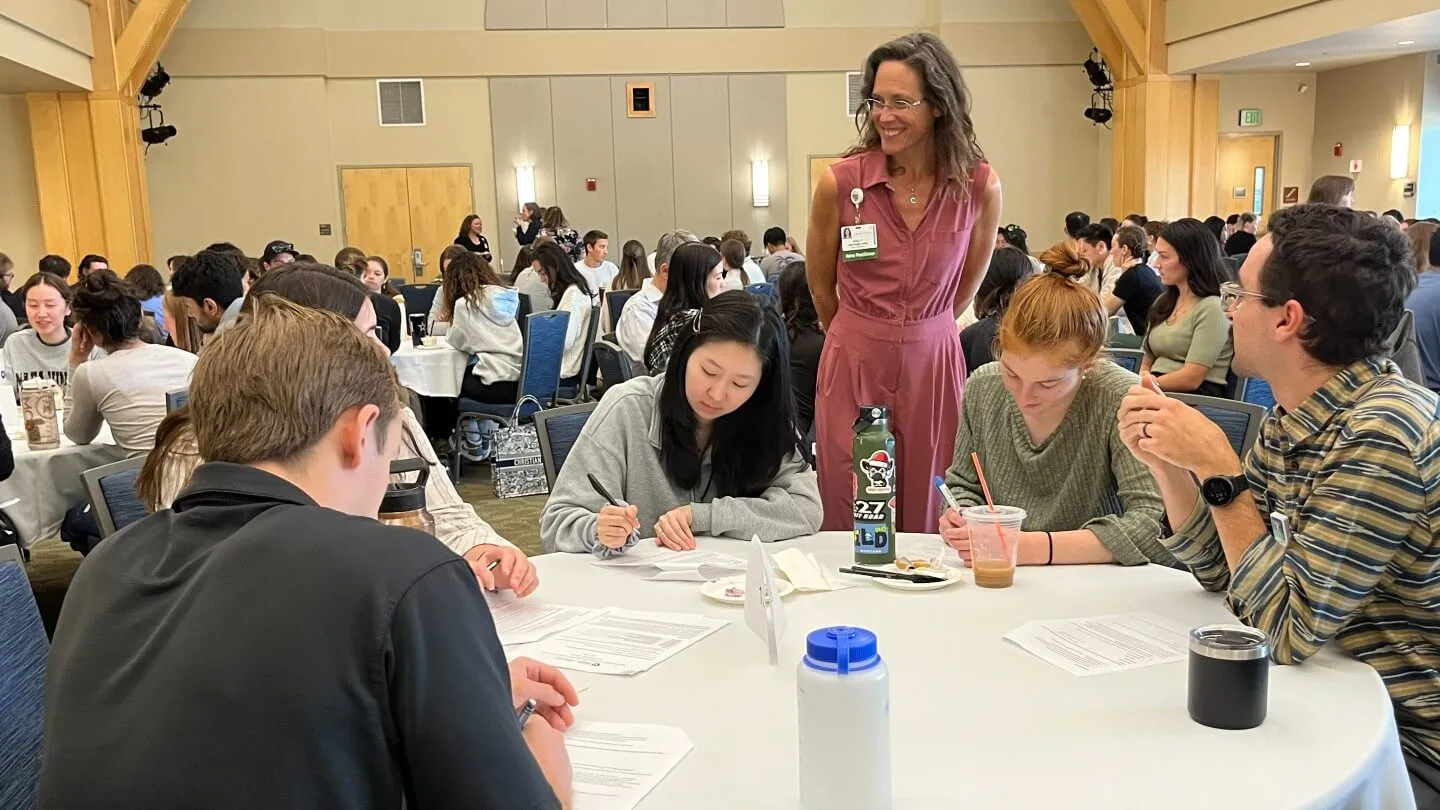On September 11, students from across the University of Vermont’s health sciences programs gathered in the Davis Center’s Maple Ballroom for the first Interprofessional Education (IPE) event of the fall semester.
Students from graduate nursing, medicine, social work, physical therapy, occupational therapy, speech language pathology, dietetics and other disciplines came together to explore the value of collaboration in delivering better patient care.
“Start growing your web, your tree, your tribe,” encouraged Holly Whitcomb, CNHS interprofessional education director, clinical associate professor, and family nurse practitioner. “In the coming months and years, you're going to start reaching out to other roles. It's all about collaboration and working together.”
Titled Introduction to IPE, the event was designed to immerse students in the core competencies of interprofessional collaboration: communication, teamwork, and shared decision-making. Through table-based case study discussions and interactive modules, students engaged with peers from other programs to share perspectives and reflect on their roles and responsibilities within the broader healthcare ecosystem.
An interprofessional healthcare team includes a range of providers working together to deliver whole-person, patient-centered care. Nurses play a critical role in monitoring patients and identifying sudden changes, often serving as the first point of contact for other team members. Occupational therapists (OTs) help patients regain functional independence—from basic tasks in acute care to broader goals in inpatient and outpatient rehab. Physical therapists (PTs) support mobility and recovery, including conducting home evaluations to ensure safe environments. Speech-language pathologists address communication, cognitive, and swallowing challenges, often collaborating with OTs and PTs in rehab settings. Primary care providers, including physicians and nurse practitioners, coordinate ongoing care post-discharge, manage medication reconciliation, and make referrals to other services. Social workers advocate for patients and families, ensuring access to community resources and supporting transitions across care settings. Health coaches empower patients to identify personal goals and adopt meaningful behavioral changes. Lab technicians provide high-quality diagnostic data that inform clinical decisions. Together, these professionals contribute their unique expertise to improve outcomes and ensure continuity of care.
Faculty facilitators guided the conversations, helping students connect classroom learning to real-world practice. The event was supported by a Brightspace module that faculty could integrate into their courses, ensuring students arrived prepared to participate meaningfully.
Looking Ahead: Palliative Care IPE Grand Rounds
The IPE momentum continues on October 16 with Collaborative Care in Action: An IPE Grand Rounds Experience. This inaugural event will focus on unfolding cases in palliative and complex care. Students will work in interprofessional teams to navigate complex care decisions, emphasizing communication, teamwork, shared decision-making and empathy in end-of-life care.
As UVM continues to invest in interprofessional education, events like these serve as powerful reminders that the best care happens when disciplines come together, learning about, with and from each other to ensure quality patient care.
Members of the Interprofessional Panel included:
- Ashley E. Couture, M.S., CCC-SLP
- Heather Stevenson, PT, D.P.T., NCS
- Janelle Sarnevitz, D.N.P., RN
- Jennifer Putney, Ph.D., M.S.W.
- Marianna Tomanelli, M.S., MLS (ASCP)
- Michaela Wilson, M.S., RD, CD
- Nicola Hawko, O.T.D., OTR/L, CLVT
- Rup Tandan, M.D., FRCP, FAAN
- Susan Whitman, PA-C, NBC-HWC
- Holly Whitcomb, D.N.P., APRN, FNP-BC (moderator)
